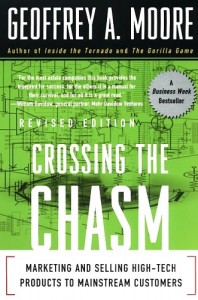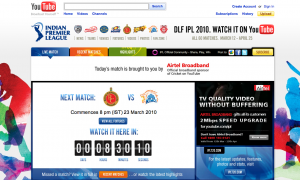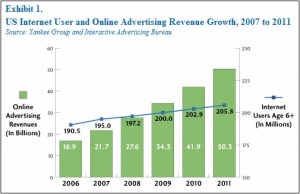 I have just finished reading Crossing the Chasm (Revised Edition) by Geoffery A. Moore. I purchased this book on Amazon after seeing it on a number of Googler’s Amazon wish-lists on LinkedIn, which is a good way to prepare for an interview with a new company! Truthfully however I decided to read the book because I have a deep appreciation of marketing and a strong desire to be an entrepreneur.
I have just finished reading Crossing the Chasm (Revised Edition) by Geoffery A. Moore. I purchased this book on Amazon after seeing it on a number of Googler’s Amazon wish-lists on LinkedIn, which is a good way to prepare for an interview with a new company! Truthfully however I decided to read the book because I have a deep appreciation of marketing and a strong desire to be an entrepreneur.
The Whole Product concept instantly resonated with me. The only thing worse than an engineer that thinks “I built it, now I just have to wait for them to come” is a sales person who thinks “we need a custom version for every customer who promises millions”. The central theme to the book is that getting a product to be successful is like organising a battle; from amassing a strong force to landing on the beach and finally taking the flag. At each stage there is a huge pit of despair that you can easily fall into. The key to it is where you spend your effort. Don’t focus too much on satisfying every product need, but just enough to appeal to a mass market. Don’t focus too much on a sophisticated marketing message, customers will get confused by and forget anything that is longer than two sentences.
One of the key learnings for me was that you shouldn’t pitch your product as a one of a kind, because nothing freaks a pragmatic buyer out more than having nothing to compare you with. How can you make a decision without a reasonable comparison? First you need to establish a market alternative (a familiar problem you are solving in an innovative new way) and secondly you establish a product alternative (a familiar solution that you have uniquely tailored to this application). By drawing a line between these two points of reference, you have created a new niche that customers will understand and appreciate.
The only aspects of this book I didn’t like were some technology references were a little outdated (even the revised edition is now 11 years old). I understand the historical examples where there was a conclusion, but some predictions are a little off (although probably good “what went wrong?” case studies). I also felt the book was a little repetitive in places, with the author jumping ahead and back again.
Overall however it was a great book and really thought provoking. It is a hard topic from my perspective because how do you teach minimalism, balance and keeping things simple? It is easy to go off on a tangent and over-invest in the area that has your short attention span as an entrepreneur. I guess not seeing the forest for the trees is a simple analogy? Anyway, I will no doubt use this book as a source of re-focusing when I do eventually realise my entrepreneurial dreams.


